Early June marks the arrival of cygnets in Minnesota. Whereas Canada Goose goslings hatch in early May, the Trumpeter Swan young appear a good month later maybe due to the fact that their nests take 14-35 days just to build.
Trumpeter Swans lay 4-6 eggs in a large nest on an existing natural platform such as a muskrat or beaver den or a substantial mat of floating vegetation. The incubation period is long, 32-37 days. After hatching the cygnets are able to leave the nest and swim and feed alongside their parents. They will retreat back to the nest area often to rest and for protection at night.
The cygnets grow fast - the above photo was taken five days later.
From AllAboutBirds:
To feed, Trumpeter Swans skim vegetation from the surface, dip their long necks underwater to forage, and tip like dabbling ducks with the rear half of their body in the air as they scour for algae, leaves, stems and roots of pondweeds and other plants.
They also pump their large, webbed feet up and down to create water currents that free roots from surrounding mud.
And for habitat:
Breeding Trumpeter Swans seek relatively shallow (less than 6 feet deep), undisturbed bodies of freshwater with abundant aquatic plants. These heavy-bodied birds also need at least 100 yards of open water for their running take-offs, and muskrat or beaver dens or small islands on which to nest. Breeding sites include small ponds (including beaver and farm ponds), lakes, marshes, bogs, glacial potholes, and quiet stretches of river.
Despite the amount of excellent habitat in this area for Trumpeters, this breeding pair has chosen a large highway stormwater retention pond that is busy and noisy with traffic. While this pond does not fit the description of an “undisturbed” body, it appears to have developed some abundant plant life after it was constructed almost 20 years ago. Hopefully this will work out okay for this young family of swans.

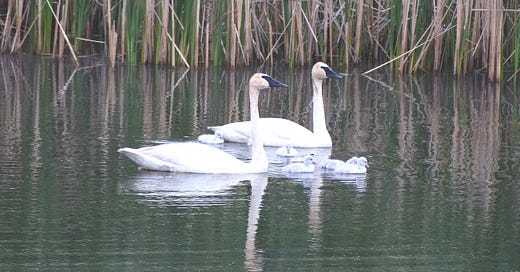


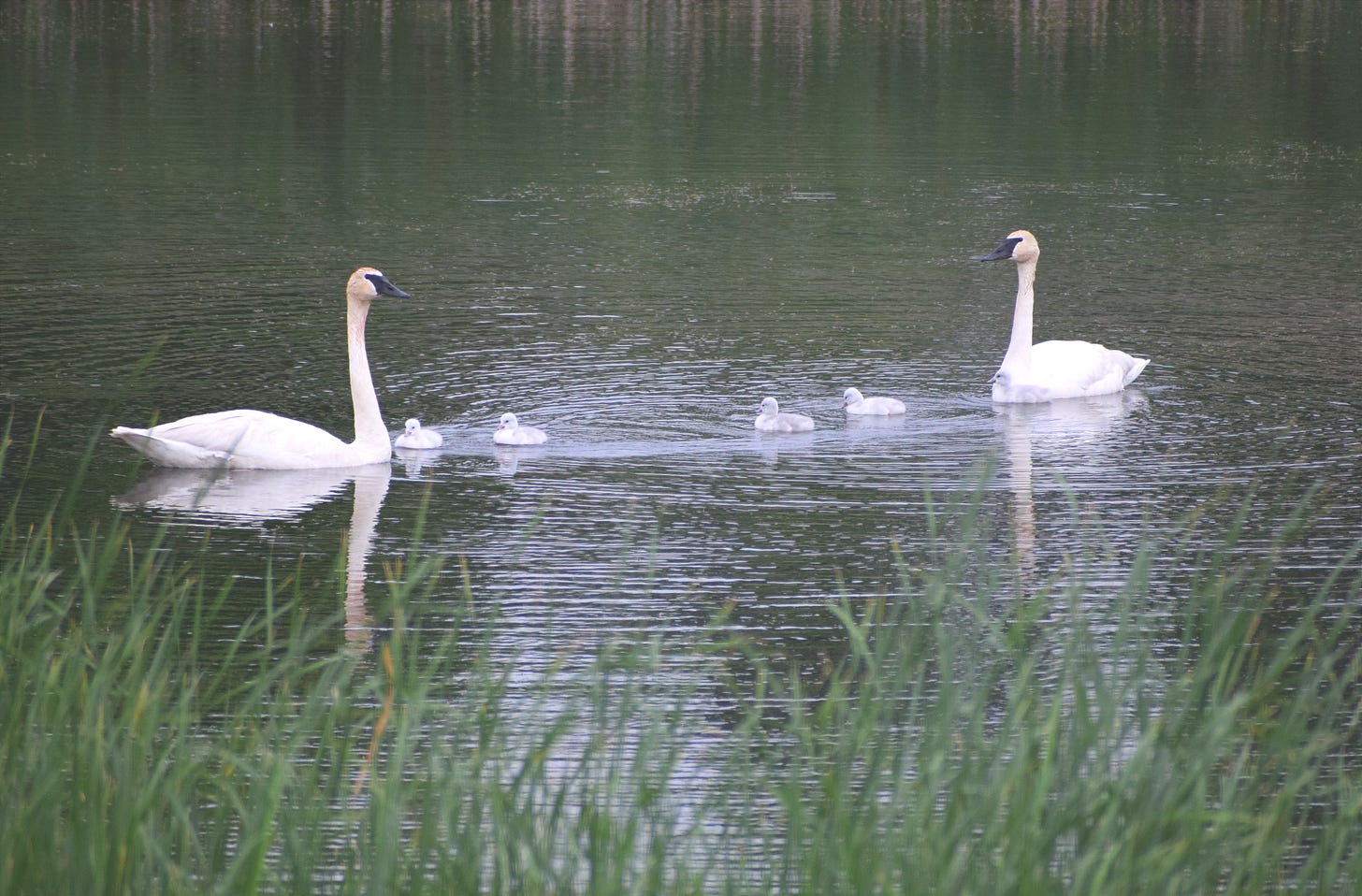
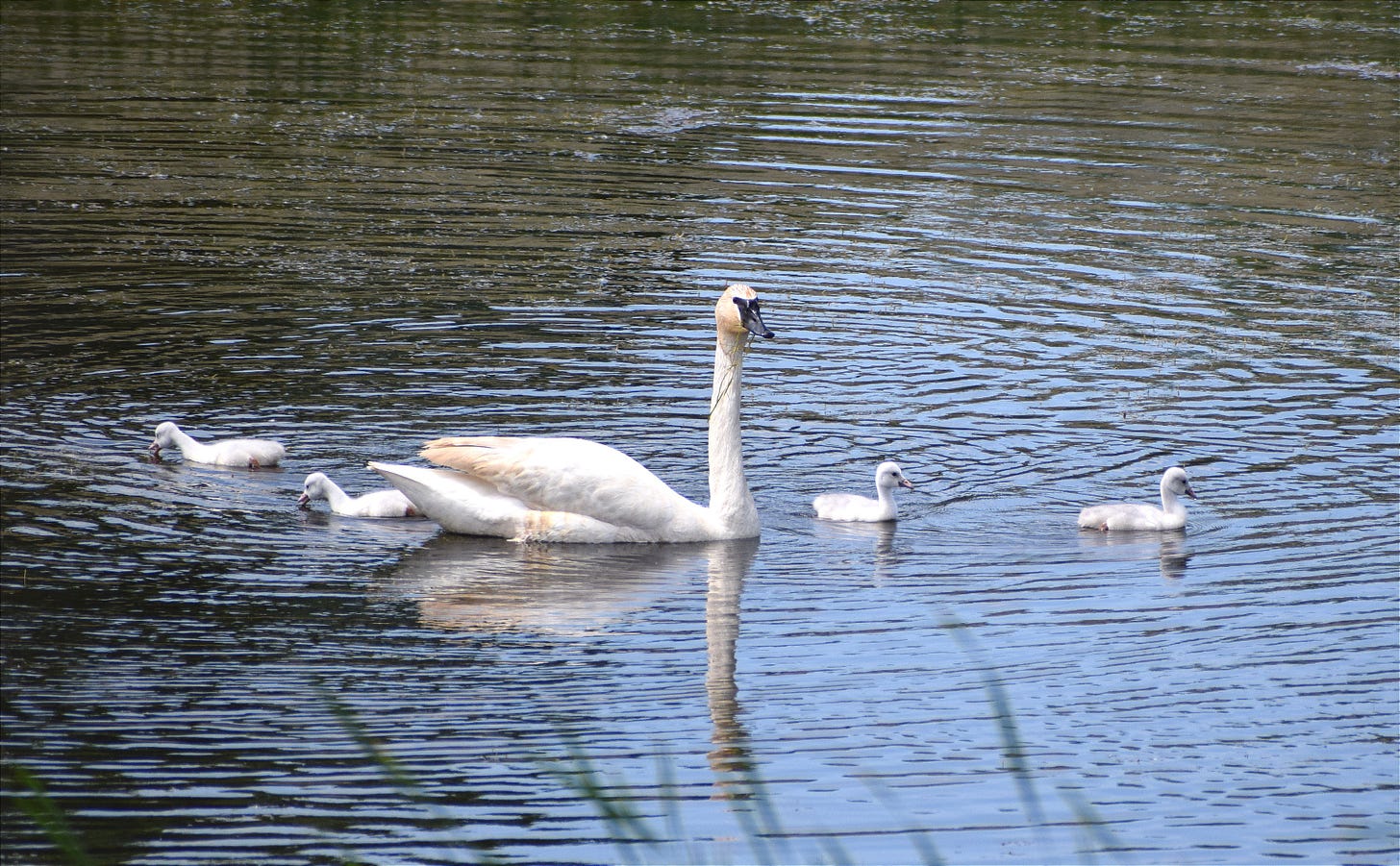
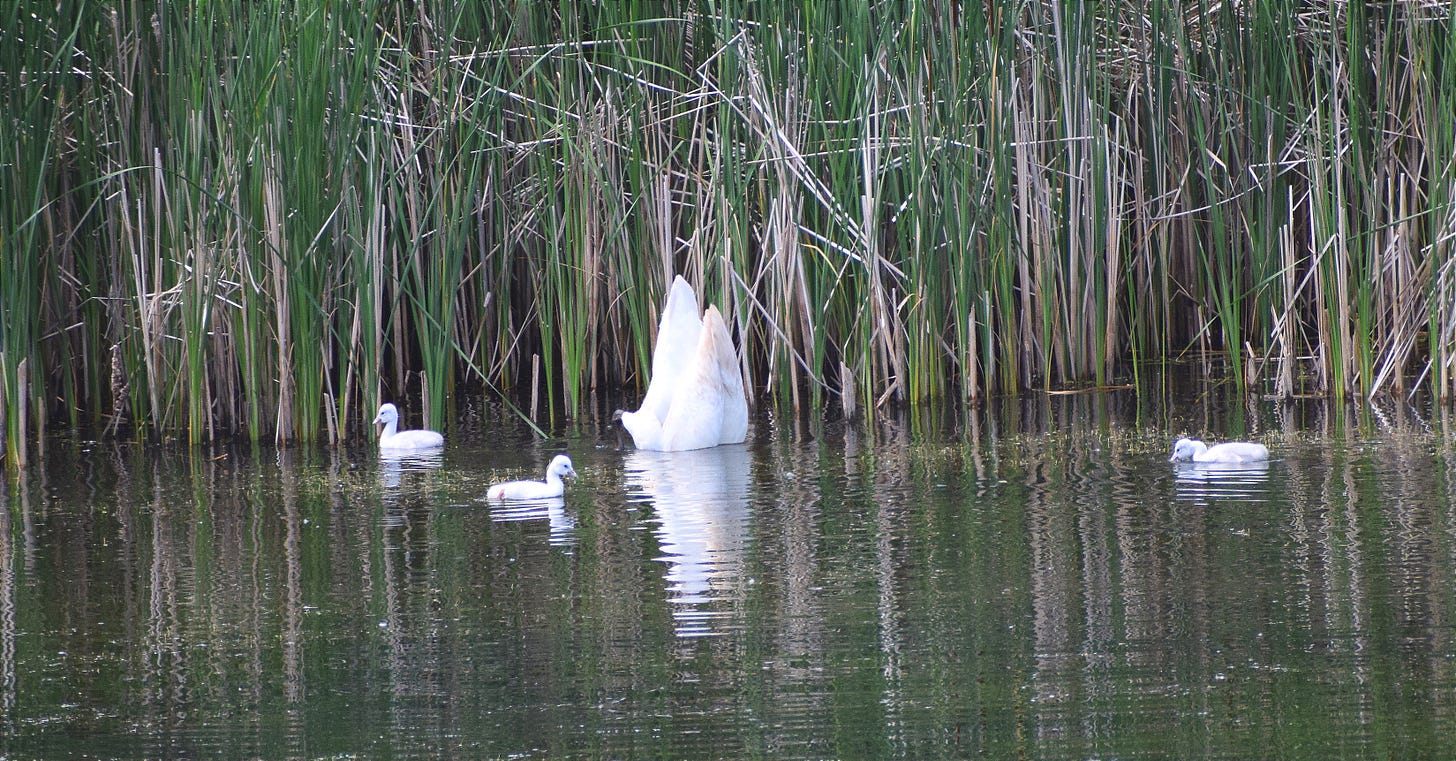
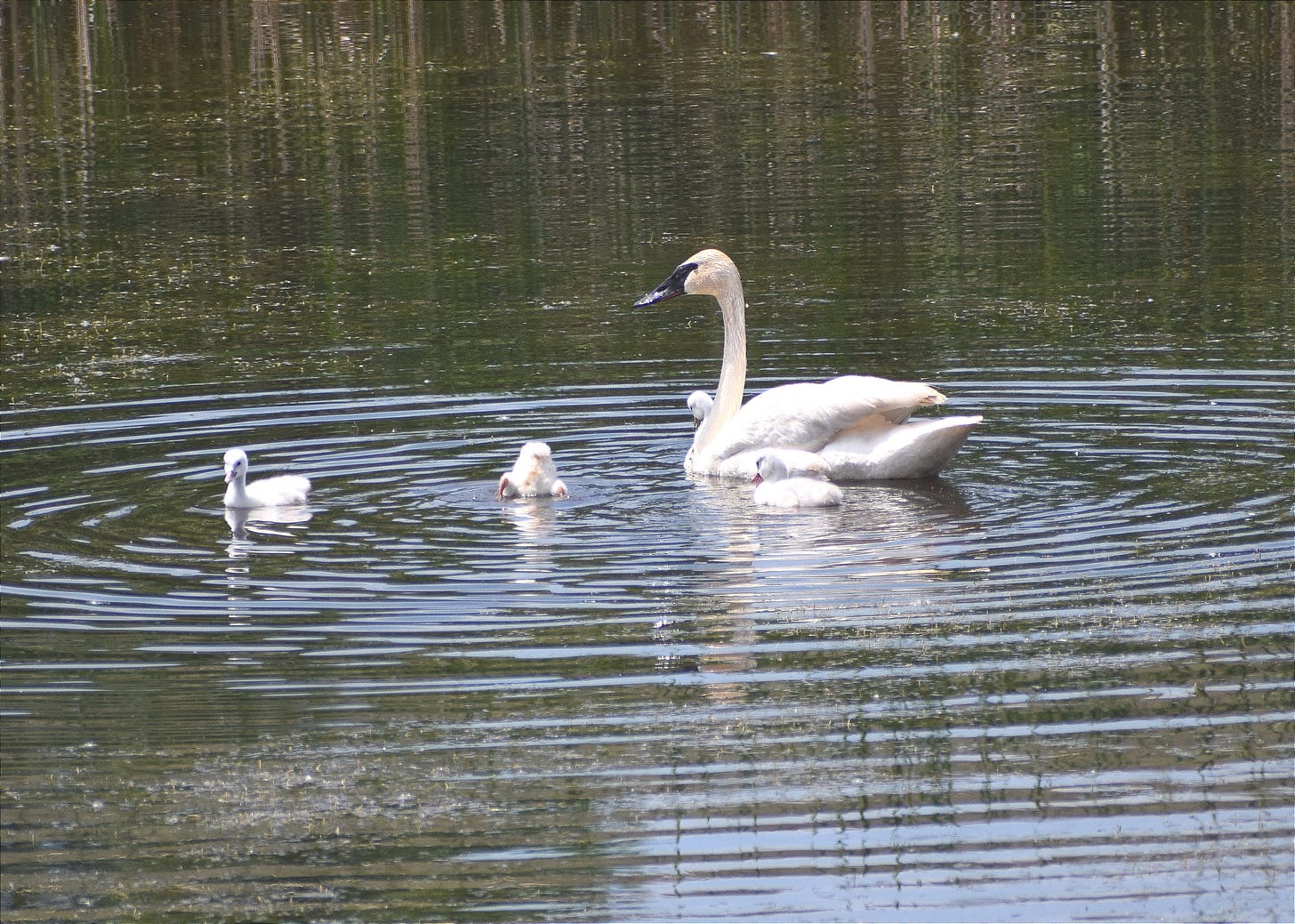
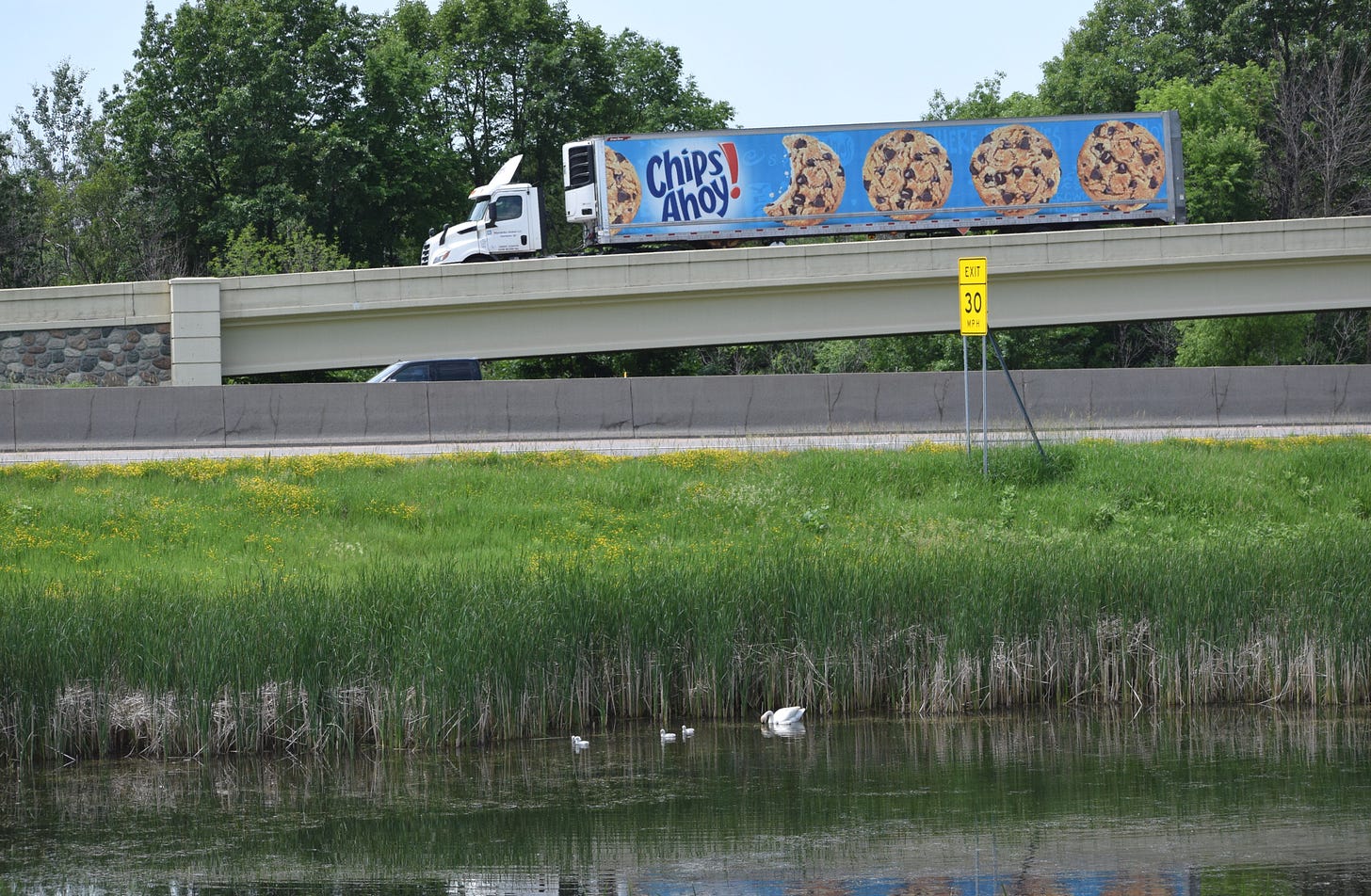
I have seen swans, ut still haven't seen them with young...so cool!